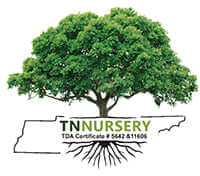
Split-Level Landscaping
Share
Enhancing Outdoor Spaces with Arborvitae, Low Plants, Hostas, and Goatsbeard
In landscaping, split-level designs offer a captivating way to transform outdoor spaces into aesthetically pleasing havens. Split-level landscaping involves creating distinct tiers or levels within a yard, blending hardscape elements like pathways and retaining walls with carefully chosen plantings to add depth, texture, and interest. Arborvitae, low plants, Hostas, and Goatsbeard stand out as versatile and charming selections among the plants that can contribute to the allure of split-level landscapes.
Arborvitae: Elegance in Evergreen
Arborvitae, with its distinctive feathery foliage and upright growth, is a staple in split-level landscapes, adding an element of elegance and structure. These evergreen trees or shrubs are known for creating privacy screens, concealing unsightly areas, or acting as focal points. The different varieties, ranging from the compact 'Emerald Green' to the towering 'Green Giant,' offer diverse options for various landscape sizes and styles. Arborvitae can be strategically placed in split-level landscaping to define boundaries between levels or add greenery along retaining walls. Their tall, slender forms create a vertical dimension that complements the horizontal planes of terraces and pathways. The soft textures of Arborvitae foliage provide a pleasant contrast to more complex hardscape elements, fostering a harmonious balance between natural and built features. As evergreens, Arborvitae also contributes to the year-round visual interest, ensuring the landscape remains appealing even during the colder months.
Low Plants: Ground-Hugging Beauty
Low plants play a crucial role in split-level landscaping by grounding the design, softening edges, and adding a touch of diversity to the composition. These miniature plants, also called ground covers, cascade gracefully over retaining walls, spill over the edges of steps, and blanket slopes with foliage and blooms. They can prevent erosion, control weeds, and create seamless transitions between different landscape levels. One popular choice for low plants is creeping thyme, which releases a fragrant aroma when stepped upon, delighting the senses while enhancing the aesthetic. Another option is sedum, a hardy succulent that offers intriguing textures and colors. Low plants create a visual continuity between levels when planted strategically, making the landscape feel unified and cohesive. Their ability to thrive in challenging conditions, such as steep slopes or rocky areas, makes them invaluable additions to split-level designs.
Hostas: Lush Foliage and Varied Colors
Hostas, celebrated for their lush foliage and diverse colors, bring a touch of luxury to split-level landscapes. These shade-loving perennials thrive in the sheltered spots created by retaining walls or raised terraces, adding a layer of texture and beauty to the overall design. Available in a spectrum of shades, from deep green to blue-gray and even variegated patterns, Hostas contribute to the palette of colors that define the landscape. Planted along pathways, nestled among boulders, or edging tiers, Hostas create a sense of intimacy and charm. Their bold leaves provide a foil to other plantings and architectural elements, breaking up the visual monotony and infusing the landscape with interest. Additionally, Hostas' adaptability to various light conditions makes them suitable for sunny and shaded areas, making them versatile choices for split-level designs with varying exposures.
Goatsbeard: Majestic Vertical Accents
Goatsbeard, scientifically known as Aruncus dioicus, is a majestic perennial that can be employed as a vertical accent within split-level landscapes. Its tall, feathery plumes, reminiscent of astilbes, rise above the lower plantings and draw the eye upward, enhancing the sense of scale and grandeur. These plumes, which appear in late spring to early summer, add a sense of movement to the landscape as they sway gently in the breeze. Goatsbeard thrives in partially shaded areas, making it an excellent addition to spaces beneath taller plants or alongside shaded pathways. Its foliage, resembling ferns, contributes to a rich textural tapestry that complements other plant selections. The sculptural nature of Goatsbeard makes it an ideal candidate for placement near focal points, such as water features or seating areas, where its presence can create a sense of drama and contemplation.
Split-level landscaping is an artful endeavor that combines architectural elements and plantings to craft visually captivating outdoor spaces. Within this realm, Arborvitae, low plants, Hostas, and Goatsbeard emerge as dynamic contributors, each bringing its unique characteristics to the tableau. Arborvitae provides structure and evergreen elegance, low plants offer a grounding and transitional touch, Hostas introduce lush foliage and color diversity, and Goatsbeard adds vertical drama and movement. Together, these plant selections breathe life into split-level landscapes, infusing them with harmony, texture, and enchantment that beckons residents and visitors to explore and savor every corner of the outdoor realm.
#landscaping #raisedbeds #plants #flowers #perennials #TNNursery
https://www.tnnursery.net/blogs/garden-blog/tennessee-wholesale-nursery-nurseries-reviews
